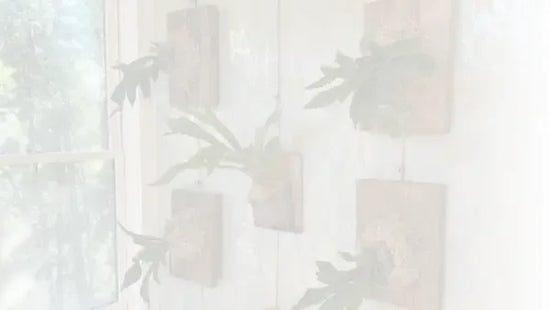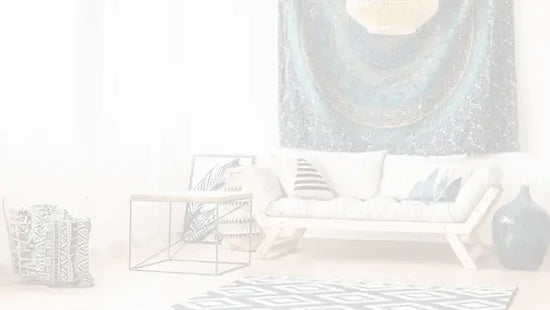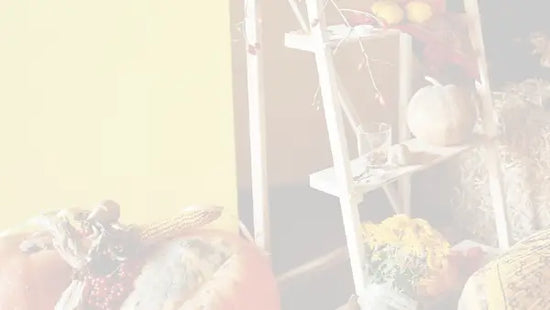A new year signals a new reset – a new space, mindset, and goal. For 2024, it’s all about curating, making your space distinctly you, and letting your external environment nourish your internal goals.
But how do you do that and avoid falling into the common mistake of buying into a home decor trend that will be tacky in just a few months? Fear not, because we’re here to help! We’ve listed a few things that are most likely to make rounds this year to help you stay ahead of the curve.

7 Interior Design Trends to Look Forward to in 2024
Get your notes and shopping lists ready, and let’s get started!
The Art of Reclamation
Have you seen Grammy winner Jon Batiste’s Architectural Digest video yet? If you have, then you’ve seen his wife, Suleika Jaouad's thought process in decorating their soul-filled home in Brooklyn. Almost everything on their shelves, tables, and walls has been thrifted, upcycled, handed down, sourced on Facebook Marketplace, or made by an artisan. The art of reclamation advocates curating a space filled with objects with a history and nurturing a lived-in atmosphere.
Nurtured by Nature
Scandinavian, Organic Modern, Wabi-Sabi, and Japandi interior design – what do all of these themes have in common? The emphasis on the natural, organic, and the passage of time. These themes have been around for a long time, but they are now more popular than ever in a post-pandemic time where we are now more aware of our physical environments. Scandinavian and Japanese designs are also known for both high-quality craftsmanship and attention to detail, so most of the furniture produced is handmade, made from natural materials, and often space-efficient.
This wabi-sabi-inspired home designed by Frank Macchia is built to co-exist with nature and let natural elements nurture its inhabitants.
Warm Minimalism
For many interior designers today, the word “minimalism” has a particular reputation: cold gray tones, industrial-inspired hardware in interior decor, and an overall lack of warmth and character. Minimalism, however, was not a recent invention, and these elements are only one interpretation from a previous time.
Minimalist interior design still has broad appeal, especially among people who find peace in reducing visual clutter from their spaces. If you think about it, the popularity of styles like Japandi and Scandinavian interior design have embraced a softer take on minimalism. Warm minimalism emphasizes variety via textures rather than colors, and have surfaces like stone, velvet, natural fabrics, and metal.
For a more nuanced take on warm minimalism, watch this video by Reynard Lowell on warm minimalism.
Coastal Mediterranean
The coastal aesthetic reached its peak on social media popularity earlier in 2023 and has retained its cultural relevance, although that’s not to say it hasn’t always been popular. There’s an interesting theory behind this phenomenon – just like in wabi-sabi, coastal home decor is oriented towards a lifestyle that appeals to an audience with whom aging is more likely to resonate. It romanticizes a quiet life, a life after retirement, away from the hustle culture.
Think European summers, arched doorways, indoor-outdoor living, natural fiber textiles, and the most exciting part: intricate tiles. Moroccan, Tunisian, Spanish, and Portuguese tiles all sport a vibrant color palette that compliments the overall earthy color palette of the Mediterranean. Ceramic and porcelain tiles are not only for the bathroom and kitchen backsplash but can be a statement wall, part of the fireplace mantel, or embedded into living room decor.
If you want an example, look no further than Shay Mitchell’s house tour for the joy and vibrance of a Mediterranean-inspired home.
Maximalism
After the long reign of minimalism, people have started embracing its antithesis: maximalism, the more is more mindset, embracing creative self-expression and challenging standard interior design tenets. Maximalist design also contributes significantly to an emerging shift in the interior design world: moving away from open concepts.
According to this article on the increasing popularity of closed concepts, the pandemic has made people realize the cognitive benefits of giving definition and variety in their physical environment, such as designating a room for a specific purpose. To avoid going through pricey renovations to change your space’s layout, maximalist decor sees having a variety of items as an advantage: using couches, bookshelves, plants, mirrors, tapestries, movable gallery wall panels, and other static decor can help set boundaries for each spot.
With maximalism taking center stage, other interior design themes anchored on eclectic home decor, such as Art Deco and Afro-modern design, are also gaining popularity. Such is the wonderful, eclectic home of Genn Franks:
Nostalgic Post-modern Mismatching
While the Y2K trend is strong, we’re not missing the equally loud nods to other decades. The upsurge of retro interior design is perhaps most encapsulated in the popular muted paint washes, pendant lamps from the 70s, terrazzo floors from the 80s, and floral and psychedelic rug patterns that are distinctly 60s.
This one is relatively niche but it had the luxury interior design world in a chokehold for some time now, although that’s not to say that there aren’t more affordable and accessible ways to do it. Vintage home decor is, after all, founded on the art of thrifting. Take a look at this home tour where all the vintage furniture was thrifted or DIY:
Historic Home Renovations
One of the most uttered phrases this year was “old money.” There’s nothing like the high Victorian ceilings, antique furniture, crown moldings, and 18th-century wainscot paneling incorporated in modern spaces to signal opulence and old-world luxury.
While an old, historical house may not be the first choice for a practical homeowner, several creative opportunities are available to someone who wants to renovate an old house or building. It’s a great way to create a modern and livable space while preserving its unique parts.
Take a look at this fantastic renovation done with Matt Berman’s vision to preserve the historic craftsmanship of a brownstone from the Civil War era while installing modern updates.
Final Thoughts
For this list, we’ve picked out the ideas we know will catch on this year – and still retain relevance even when newer, flashier trends start catching everyone’s attention. It takes real impact to attain timelessness and still foster the same values even when reinterpreted and reimagined to fit the decade.
Have any of these interior design trends spoken to you? If so, let us know! We’d love to see your unique interpretation of any design template, so feel free to send us an email and pictures!
Happy decorating!








Leave a comment (all fields required)